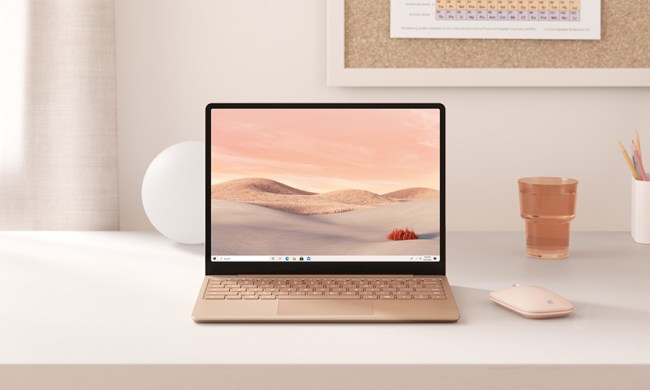After much anticipation, Microsoft has launched the third iteration of its Surface Book 2-in-1. The Surface Book 3 doesn’t look all that different from previous generations, but internally, it contains some of the biggest improvements to the line that launched in 2015.
Microsoft also introduced the Surface Go 2, the sequel to the smallest and most affordable device in the Surface family.
Surface Book 3 powers up

While it lacks a standout upgrade, Microsoft has brought a number of changes that will drastically improve the system overall. On the CPU front, the Surface Book 3 now includes 10th-gen Intel Ice Lake processors. The Surface Book 3 still comes in two variants, the 13.5-inch and the larger 15-inch model. The 13.5-inch model can now be configured with either the Intel Core i5 or Core i7, while the 15-inch model now exclusively runs the Core i7.
These are still quad-core processors. Microsoft calls the Surface Book the device made with “workstation” performance, but the shortage of cores and threads will still hamper its content creation capabilities. Many of the best laptops include options for H-series processors, which include up to six or eight cores.
In the graphics department, the Surface Book 3 is more promising. The 13.5-inch model now has an option of integrated Intel Iris Plus graphics or the discrete Nvidia GTX 1650. The Intel G7 Iris Plus graphics on the Intel Core i5 make for a nice upgrade over the Intel UHD 630 integrated graphics in the previous base model.
The 15-inch model has just one option for graphics: The beefier Nvidia GTX 1660 Ti. Memory at this size also now starts at 16GB. Clearly, Microsoft must have realized that most people interested in a 15-inch device want something with some extra oomph for gaming or content creation.
That doesn’t mean the Surface Book 3 is a gaming laptop. It never has been. Our testing on both the 13.5-inch and 15-inch Surface Book 2 showed some performance limitations, likely because of how thin the base of the chassis is. Thanks to the “fulcrum hinge,” it ends up being 0.90 inches thick when closed, but the actual base itself is quite small. Both devices are the exact same thickness, though the 15-inch is significantly heavier at 4.2 pounds.

The weight and size of the chassis hasn’t changed, and neither has the display. The 13.5-inch model has a 3,000 x 2,000 resolution screen, while the 15-inch model is 3,240 x 2,160. Like all Surface products, these keep the 3:2 aspect ratio of the screen. It’s a comfortable screen shape for when you detach the screen for tablet mode.
Other changes include options for adding up to 32GB of faster 3,733MHz LPDDR4X RAM that’s twice the speed and capacity of the Surface Book 2. The new model also comes with what Microsoft calls “the fastest SSD” it’s ever shipped. On the larger model, you can now add up to 2TB of storage.
Microsoft is touting a whopping 17.5 hours of battery life on the 15-inch model, and 15.5 hours on the 13.5-inch model. Thanks to the extra battery cells in the tablet itself, the Surface Book has historically been the longest-lasting laptop you can buy.
The Surface Book 3 comes with the same selection of ports: Two USB-A 3.1 Gen 2, a USB-C 3.1 Gen 2, a full-size SD card slot, and a Surface Connect dock. The 2-in-1 still does not support Thunderbolt 3, a connection common in laptops at this price.
The 13.5-inch model now starts at $1,600, while the 15-inch starts at $2,300.
Surface Go 2: Faster, larger

Microsoft also updated the Surface Go 2, the smallest of the Surface family. It’s been increased in size from 10 inches to 10.5 inches, with smaller bezels to maintain a similar footprint. With that larger screen, you get a slightly higher screen resolution of 1,920 x 1,280 and a slightly higher pixel density. The extra screen size does add 0.05 pounds to bring it to 1.2 pounds. For reference, the $329 iPad weighs 1.09 pounds and has a higher resolution 2,160 x 1,620 screen.
The processor is the most significant upgrade. There’s now an option for an Intel 8th-gen Core m3 for $630. It’s still only a dual-core processor, but it should added some much-needed snappiness to a system that felt a bit clunky at times. The $400 base model retains the Intel Pentium Gold 4425Y chip, which should provide similar performance to the original Surface Go.
The Surface Go 2 offers options for either 4GB or 8GB of RAM and 64GB or 128GB of storage. The 64GB option is still the slower eMMC-type storage, while the 128GB is an SSD. The ports haven’t changed this time around — there’s still a USB-C port, a microSD card slot, and a Surface Connect dock.

The Surface Go 2 is still sold separate from the Type Cover keyboard, which costs an extra $130. An LTE model is also available for $730.
Both devices come with 5-megapixel 1080p webcams, which Microsoft highlighted as an important feature in the current work-from-home environment. Nearly all laptops stick with 720p cameras, even expensive options like the MacBook Pro or Dell XPS 13. Even Microsoft’s own Surface Laptop 3 comes with a 720 webcam.
The Surface Go 2 and Surface Book 3 will both be available for purchase on May 12.


